Explore our range of intrinsically safe (IS) submersible hydrostatic level sensors, designed for accurate liquid level measurement in hazardous environments. These sensors are certified for use in Zone 0 and Zone 1 classified areas, ensuring safe and reliable operation in the presence of flammable gases, vapors, and dust.
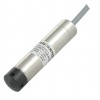 Fleet management system submersible 3000mm height petrol tank level ATEX rated pressure sensor - ATEX rated submersible pressure sensor for fleet management system (FMS) petrol applications, ideal for petrol applications in hazardous environments.
Fleet management system submersible 3000mm height petrol tank level ATEX rated pressure sensor - ATEX rated submersible pressure sensor for fleet management system (FMS) petrol applications, ideal for petrol applications in hazardous environments. Retrofitting ship bubbler tank gauging system with 22mm submersible level probe - A narrow 22mm diameter submersible level transmitter was used to replace an old bubbler system on a ship, providing an easy retrofit solution for fuel tanks without mechanical changes.
Retrofitting ship bubbler tank gauging system with 22mm submersible level probe - A narrow 22mm diameter submersible level transmitter was used to replace an old bubbler system on a ship, providing an easy retrofit solution for fuel tanks without mechanical changes.
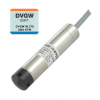 LMP307 Submersible Level Transmitter
LMP307 Submersible Level Transmitter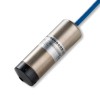 LMK458 Marine Approved Hydrostatic Level Transmitter
LMK458 Marine Approved Hydrostatic Level Transmitter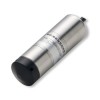 LMK382 Low Range IP68 Waste Water Level Transmitter
LMK382 Low Range IP68 Waste Water Level Transmitter LMP 308 Removable Waterproof Cable Connection Water Level Sensor
LMP 308 Removable Waterproof Cable Connection Water Level Sensor
- IP68 sewage level transmitter with 6m/20ft range, ATEX IS approval and FEP cable - Monitor wastewater levels with this robust IP68 submersible sensor featuring a flush ceramic diaphragm and FEP cable. ATEX approved for hazardous areas.
- Sewage level transmitter for submerging in low depths to 5 psi - Submersible IP68 level transmitter for sewage applications. 5 psi g range, 4-20mA output, FKM seals, and FEP cable. Ideal for level monitoring in harsh environments.
- Leachate holding tank submersible level sensor for 5 metre depth - Submersible level sensor with 4-20mA output, ATEX IS certification for measurement of leachate quantity in holding tanks
- Zone 0 ATEX borehole water level sensor for flammable atmospheres - Monitor water levels in hazardous area boreholes with this ATEX-approved transmitter. 100m depth, Zone 0.
 LMK 487 Submersible Ballast Tank and Draught Level Pressure Transmitter
LMK 487 Submersible Ballast Tank and Draught Level Pressure Transmitter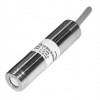 LMK307 Submersible Waste Water Level Sensor
LMK307 Submersible Waste Water Level Sensor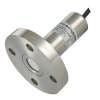 LMK457 Marine Approved Level Transmitter
LMK457 Marine Approved Level Transmitter
Find out more about Hazardous Area Submersible Hydrostatic Liquid Level Sensors to determine which product options and capabilities will best meet your application requirements.
Submersible hydrostatic level sensors are essential tools for measuring liquid levels in a variety of industrial applications. They are particularly well-suited for use in hazardous areas where explosive atmospheres may be present. These sensors operate on the principle of hydrostatic pressure, where the pressure exerted by a liquid column is directly proportional to its height. By measuring this pressure, the sensor can accurately determine the liquid level.
Advantages
- Intrinsically Safe: Our sensors are certified to meet the stringent requirements of ATEX, IECEx, and other international standards for use in hazardous areas. This ensures safe operation in environments with potentially explosive atmospheres.
- IP68 Submersible Design: The robust IP68 rated housing protects the sensor from the ingress of dust and water, making it suitable for continuous submersion in various liquids.
- Corrosion-Resistant Materials: Constructed from high-quality stainless steel or other corrosion-resistant materials, these sensors can withstand harsh chemical environments and ensure long-term reliability.
- Easy Installation and Maintenance: Submersible sensors can be easily installed by lowering them into the tank or borehole. They typically require minimal maintenance, reducing downtime and operating costs.
Applications
Submersible hydrostatic level sensors are employed in a wide range of industries and applications to provide accurate and reliable liquid level measurement in challenging environments. Their ability to withstand hazardous conditions, coupled with their robust design and ease of installation, makes them a versatile solution for various level measurement needs. Some of the key applications include:
- Petrochemical: Monitoring levels in storage tanks containing crude oil, gasoline, diesel fuel, and other flammable liquids. They are also critical for level measurement in process vessels, pipelines, and refineries where volatile gases and vapors may be present. Ensuring accurate level measurement in these applications is vital for preventing overfills, spills, and potential explosions.
- Pharmaceutical: These sensors play a crucial role in maintaining precise liquid levels during the production of pharmaceuticals, ensuring product quality and consistency. They are used in various applications, such as measuring levels in reactors, mixing tanks, and storage vessels containing solvents, reagents, and active pharmaceutical ingredients. The sensors’ hygienic design and compatibility with cleaning agents make them suitable for sterile environments.
- Landfill: Monitoring leachate levels in landfill sites is essential for environmental protection and regulatory compliance. Submersible hydrostatic level sensors provide accurate and reliable level data, enabling operators to manage leachate effectively and prevent groundwater contamination. The sensors’ ability to withstand harsh conditions, including the presence of corrosive liquids and solid debris, ensures long-term performance in this demanding application.
- Sewage Treatment: Accurate level measurement is critical throughout the sewage treatment process. Submersible sensors are used to monitor levels in various stages, including primary treatment (grit chambers, primary clarifiers), secondary treatment (aeration tanks, secondary clarifiers), and tertiary treatment (filtration, disinfection). These sensors help optimize treatment efficiency, prevent overflows, and ensure compliance with environmental regulations.
Selection Considerations
Selecting the appropriate submersible hydrostatic level sensor depends on several factors:
- Hazardous Area Classification: Ensure the sensor’s certification matches the specific hazardous zone classification of your application (e.g., Zone 0, Zone 1, Zone 2).
- Liquid Type: Consider the chemical compatibility of the sensor materials with the liquid being measured.
- Measurement Range: Choose a sensor with a measurement range that encompasses the expected liquid levels.
- Accuracy and Precision: Determine the required accuracy and precision for your application.
- Output Signal: Select a sensor with an output signal compatible with your control system (e.g., 4-20mA, HART, Modbus).
By carefully considering these factors, you can select the right submersible hydrostatic level sensor to ensure accurate and reliable liquid level measurement in your hazardous area application.
